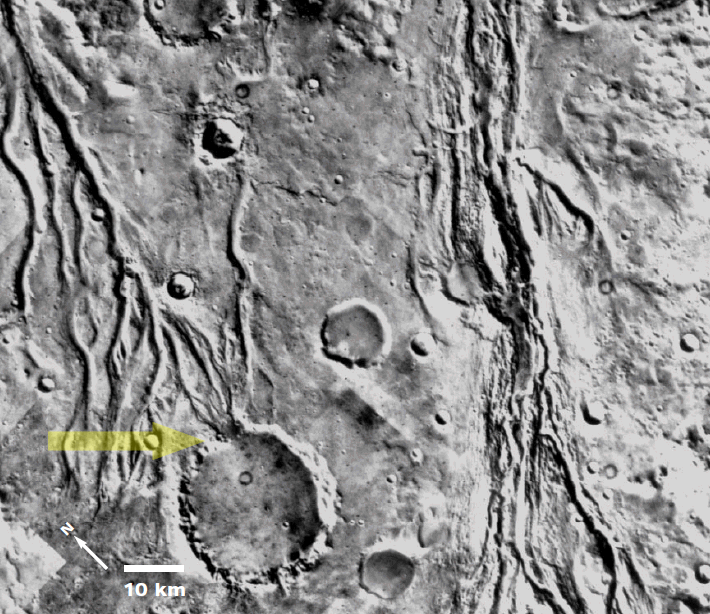Geology on Mars
Part 2
Solutions
This unit of work was adapted from https://solarsystem.nasa.gov/docs/Geologic_Landforms_Mars.pdf 7/01/2016 3.23 pm

1) Olympus Mons is a shield volcano 600 km in diameter, rising 25 km above the surrounding plain, shown on the left. Around its base is a steep cliff as high as 6 km.
a) Examine the caldera (labeled A) and estimate its diameter.
80 km
b) Do you think the surface of Olympus Mons is geologically old or young, when compared to the surface of the
Moon? Explain your answer.
Relatively young. There are few craters and they are fairly young as we can see by the rims of each crater.

2) Valleys west of Chryse Planitia. Similar to some river systems on Earth, these martian channels have a branching pattern.
a) In what direction did the water flow?
Northeast (from bottom to the top of the photo).
b. Is this a relatively old or young region of Mars? Explain
Relatively old as we can see by the weathered rim of the craters and by the number of craters.
c. Are the craters you observe older or younger than the valleys? Justify your answer.
They are older as some of the valleys, yellow arrow, cuts across the rim of some craters

3) The Hesperia region in the southern hemisphere consists of crate red plains which have been modified by wind. Wind-produced features, called bright wind streaks, are associated with many craters.
a) Describe the appearance and orientation of the wind streaks.
The wind streaks are white in appearance and point south-east.
b) If wind streaks are dust deposits formed downwind from the craters, what was the direction of the wind that formed these streaks? (Wind direction refers to the direction from which the wind is coming from.)
Wind was blowing from the North-west

4) Apollinaris Patera (A) and surrounding region.
a) Based on your observations, what is the probable order of occurrence of A, B, C, and D. (i.e., which came first, second, third, last)? Give evidence for your answer.
D, A , C , B.
D is a very old degraded crater. The flows from A are modified at their southern part by sediments from crater D due to flow of water in channel C. So A preceded C. (This is very difficult to
see and students may reverse the order of
these two events.) Crater B is fresh in appearance rim is not eroded and thus is probably very young.
b) The region around Gusev crater (D) slopes North. What type of material or rock comprises the floor of Gusev? Explain
Since there was water flow over this region and at times may have settled rock particles which compressed into sedimentary rock. So sedimentary rock is probably the material at the base of this crater.